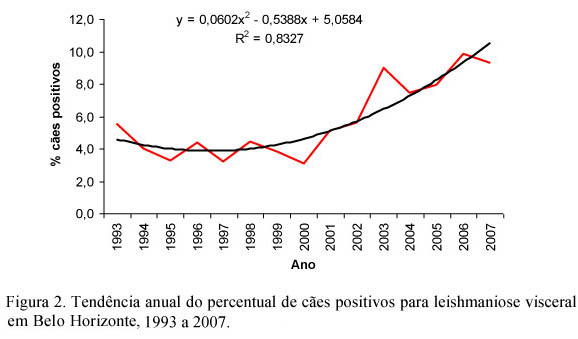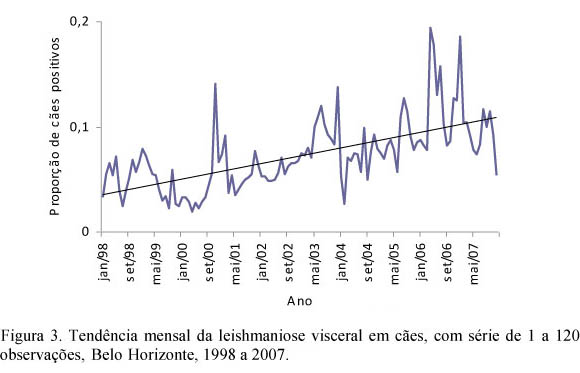The chronological series analysis and the tendencies of both human and canine visceral leishmaniasis were determined in Belo Horizonte city, from 1993 to 2007. From 1994, when the first cases of the disease were reported, until 2007, 994 human cases were recorded, which led to 116 deaths. From 1993 to 2007, 1,492,401 samples of canine blood were analyzed by the enzyme-linked immunosorbent assay (ELISA) as screening test and by the Indirect Immunofluorescence (IFI) as confirmatory test. The rate of positive results was 5.9%. The analyses indicated that the visceral leishmaniasis presents a tendency of increasing the coefficient of incidence in humans and prevalence in dogs and different archetypes of this tendency were observed portraying historical moment of endemic transition. Canine visceral leishmaniasis did not show a seasonal distribution, and it was not possible to determine whether the phenomenon was cyclic or not. Human and canine visceral leishmaniasis showed a broad spatial distribution in the nine administrative sectors with a differentiated risk of illness, in spite of the presence either of the sources of infection or the susceptible individuals in the whole county.
visceral leishmaniasis; tendency; seasonality; cyclic










